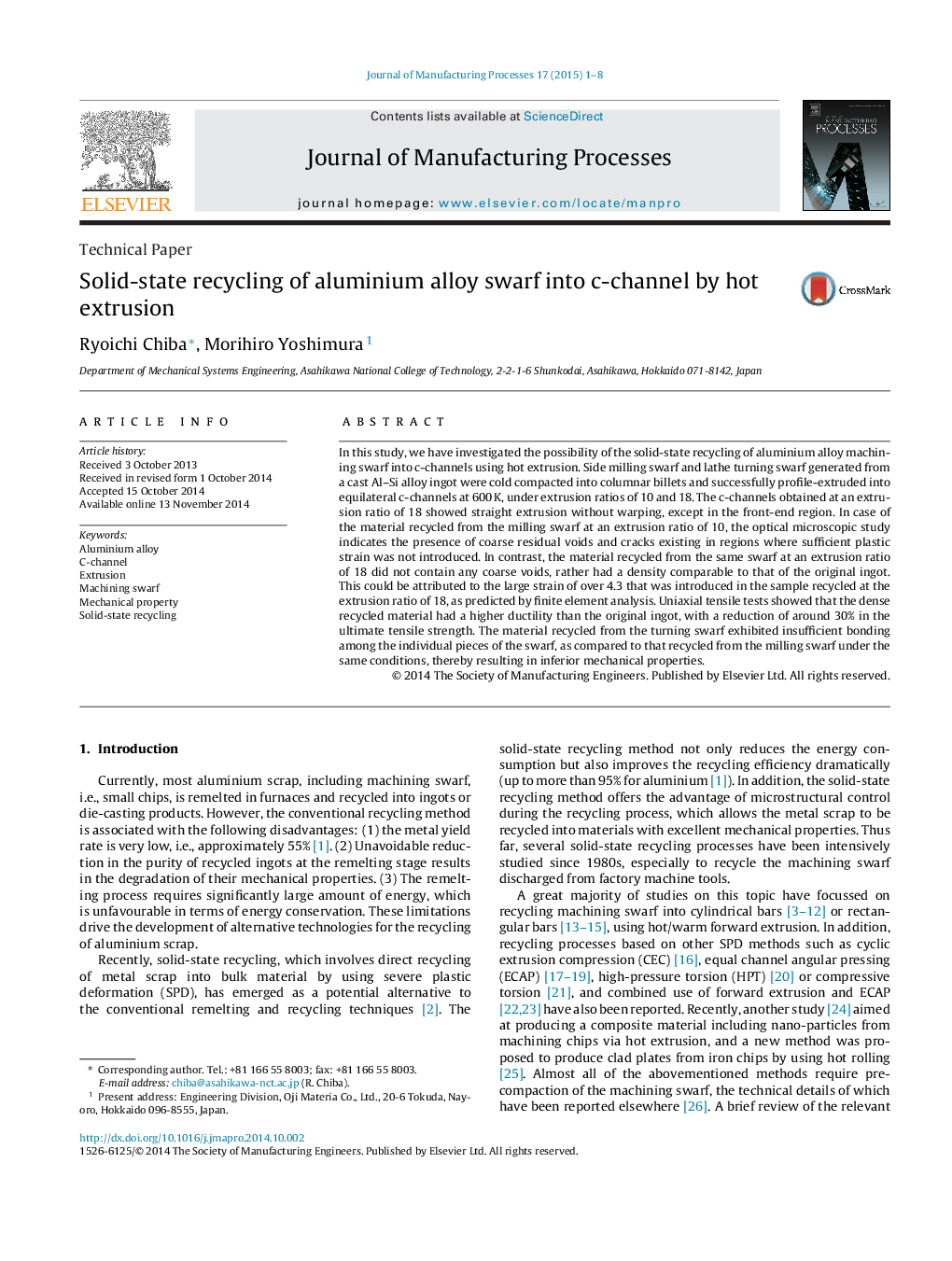| Article ID | Journal | Published Year | Pages | File Type |
|---|---|---|---|---|
| 1696992 | Journal of Manufacturing Processes | 2015 | 8 Pages |
In this study, we have investigated the possibility of the solid-state recycling of aluminium alloy machining swarf into c-channels using hot extrusion. Side milling swarf and lathe turning swarf generated from a cast Al–Si alloy ingot were cold compacted into columnar billets and successfully profile-extruded into equilateral c-channels at 600 K, under extrusion ratios of 10 and 18. The c-channels obtained at an extrusion ratio of 18 showed straight extrusion without warping, except in the front-end region. In case of the material recycled from the milling swarf at an extrusion ratio of 10, the optical microscopic study indicates the presence of coarse residual voids and cracks existing in regions where sufficient plastic strain was not introduced. In contrast, the material recycled from the same swarf at an extrusion ratio of 18 did not contain any coarse voids, rather had a density comparable to that of the original ingot. This could be attributed to the large strain of over 4.3 that was introduced in the sample recycled at the extrusion ratio of 18, as predicted by finite element analysis. Uniaxial tensile tests showed that the dense recycled material had a higher ductility than the original ingot, with a reduction of around 30% in the ultimate tensile strength. The material recycled from the turning swarf exhibited insufficient bonding among the individual pieces of the swarf, as compared to that recycled from the milling swarf under the same conditions, thereby resulting in inferior mechanical properties.
